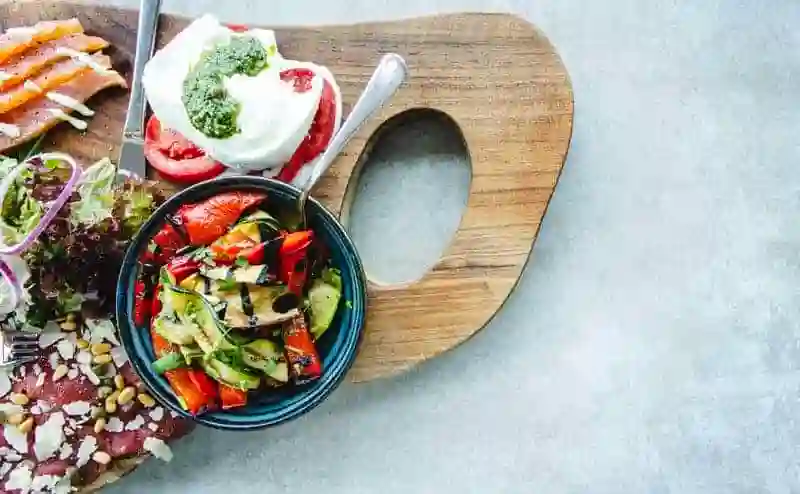There’s something undeniably appealing about dining on dishes that feature the freshest, most flavorful ingredients of the season. As the seasons change, so do the fruits and vegetables that flourish, offering a vibrant array of flavors and nutrients to incorporate into your meals. In this article, we’ll explore the concept of seasonal eating and provide you with healthy dinner ideas that celebrate the bounty of each season, making the most of fresh produce while promoting a balanced and wholesome diet.
The Significance of Seasonal Eating
Seasonal eating involves aligning your diet with the natural growing cycles of fruits, vegetables, and other agricultural products. It encourages a connection to the earth, the environment, and local farming practices. There are several compelling reasons why embracing seasonal eating can benefit both your health and the planet:
- Nutrient-Rich Foods: Seasonal produce is typically harvested at its peak ripeness, ensuring that it’s packed with the highest levels of vitamins, minerals, and antioxidants.
- Environmental Sustainability: Buying locally grown, seasonal foods reduces the need for long-distance transportation and minimizes the carbon footprint associated with food production.
- Supporting Local Agriculture: Seasonal eating supports local farmers, strengthens the community, and helps preserve the tradition of farming.
- Economic Benefits: Buying seasonal foods can often be more affordable, as there is an abundance of these items available.
- Diverse Diet: Embracing the seasons in your cooking encourages a diverse diet and keeps meals interesting and flavorful.
Seasonal Dinner Ideas
Now, let’s delve into some delightful seasonal dinner ideas that allow you to make the most of fresh produce throughout the year.
1. Spring: Asparagus and Pea Risotto
Ingredients:
- Arborio rice
- Fresh asparagus spears, chopped
- Fresh peas, shelled
- Onion, finely chopped
- Garlic, minced
- Vegetable or chicken broth (low-sodium)
- White wine (optional)
- Parmesan cheese (grated)
- Fresh lemon juice
- Fresh mint leaves (for garnish)
- Olive oil
- Salt and pepper to taste
Instructions:
- Sauté chopped onion and minced garlic in olive oil until translucent.
- Add Arborio rice and stir for a few minutes until it’s well coated with the oil.
- If using wine, pour in a splash and cook until it’s mostly absorbed.
- Begin adding warm vegetable or chicken broth, one ladle at a time, stirring constantly until absorbed before adding more.
- When the rice is almost cooked, add chopped asparagus and peas.
- Finish with freshly grated Parmesan cheese, lemon juice, and salt and pepper to taste.
- Serve with a garnish of fresh mint leaves.
This springtime risotto highlights the tender asparagus and sweet peas that come into season during this period.
2. Summer: Caprese Salad Stuffed Avocados
Ingredients:
- Ripe avocados
- Cherry tomatoes, halved
- Fresh mozzarella cheese, cubed
- Fresh basil leaves, torn
- Balsamic glaze
- Olive oil
- Salt and pepper to taste
Instructions:
- Cut avocados in half and remove the pits.
- In a bowl, combine halved cherry tomatoes, cubed fresh mozzarella cheese, and torn fresh basil leaves.
- Drizzle with olive oil and balsamic glaze, and season with salt and pepper.
- Fill each avocado half with the caprese salad mixture.
- Serve as a refreshing and satisfying summer dinner.
This dish takes full advantage of the ripe, juicy tomatoes and fragrant basil that abound in summer.
3. Fall: Butternut Squash and Sage Pasta
Ingredients:
- Whole wheat pasta
- Butternut squash, peeled and diced
- Fresh sage leaves
- Onion, finely chopped
- Garlic, minced
- Olive oil
- Low-sodium vegetable broth
- Parmesan cheese (grated)
- Salt and pepper to taste
Instructions:
- Roast diced butternut squash with fresh sage leaves and a drizzle of olive oil until tender and slightly caramelized.
- Sauté finely chopped onion and minced garlic in olive oil until translucent.
- Cook whole wheat pasta according to package instructions.
- Blend roasted butternut squash with low-sodium vegetable broth until smooth.
- Toss cooked pasta with the butternut squash sauce and sautéed onion and garlic.
- Finish with freshly grated Parmesan cheese, salt, and pepper.
- Serve as a comforting fall dinner.
This pasta dish captures the essence of autumn with its rich butternut squash and aromatic sage.
4. Winter: Citrus and Beet Salad with Grilled Chicken
Ingredients:
- Grilled chicken breasts
- Mixed greens
- Beets, roasted and sliced
- Oranges, segmented
- Grapefruit, segmented
- Pomegranate seeds
- Goat cheese (crumbled)
- Balsamic vinaigrette dressing
Instructions:
- Grill chicken breasts until fully cooked, then slice them.
- Arrange mixed greens on a plate and top with sliced beets, orange and grapefruit segments, pomegranate seeds, and crumbled goat cheese.
- Place grilled chicken slices on top.
- Drizzle with balsamic vinaigrette dressing.
- Serve this vibrant salad as a refreshing and nutritious winter dinner.
This winter salad combines the sweetness of citrus fruits with the earthy flavors of roasted beets for a burst of color and flavor during the colder months.
Conclusion
Seasonal eating not only enriches your meals with the freshest ingredients but also connects you to the natural rhythms of the world around you. By incorporating seasonal produce into your dinner recipes, you can enjoy a diverse range of flavors, while supporting local farmers and promoting environmental sustainability. Whether you’re savoring the bright tastes of summer or relishing the cozy comforts of winter, seasonal eating offers a delicious and nutritious way to celebrate the changing seasons through your meals. So, embrace the bounty of each season and elevate your dinner table with the beauty and flavors of fresh, seasonal produce.













